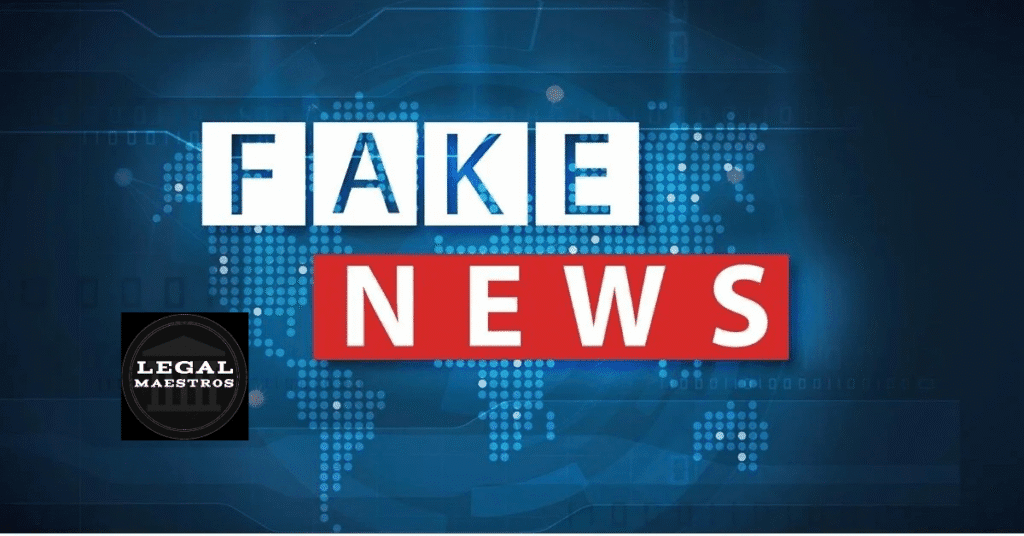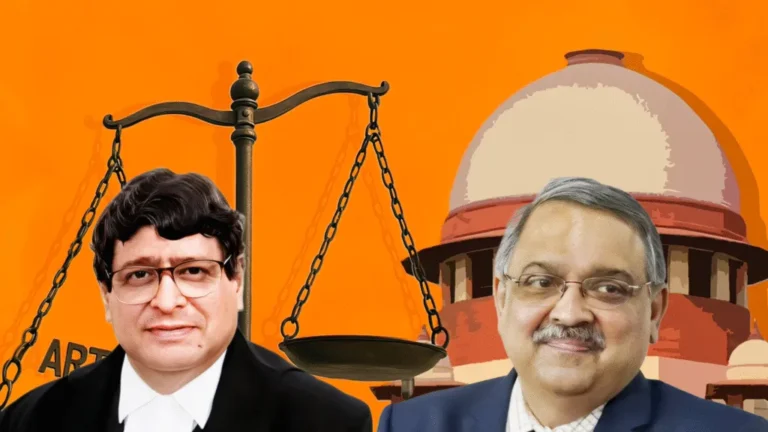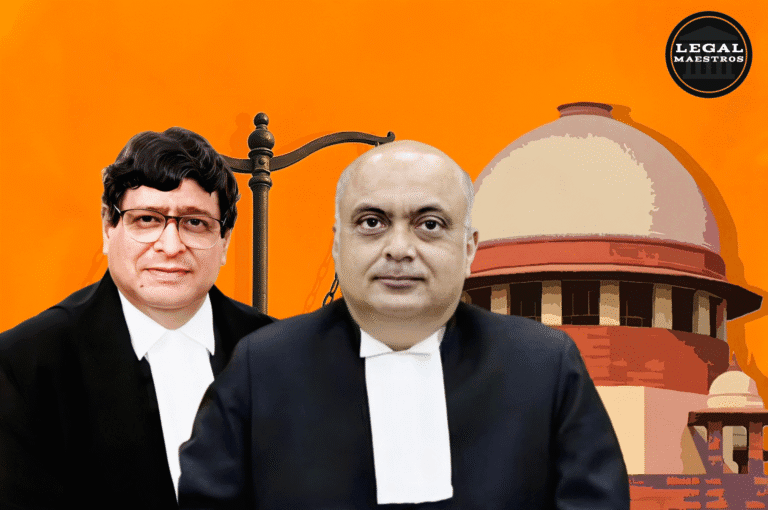
Why India Urgently Needs Penal Laws to Address the Spread of Fake News
Introduction
At this point in time, misleading information is more likely to spread than the truth. As a result of India’s enormous population and rapidly expanding internet access, social media and messaging platforms have become havens for information that is intentionally deceptive.
Phony news poses a significant risk to public safety, social cohesion, and democratic procedures. Not only does it exacerbate community tensions that are through doctored footage, but it also causes panic over health worries that are driven by phony stories.
Despite this, India does not have any particular punitive legislation to discourage and penalize people who distribute false information. Due to the absence of a legal framework, bad actors are able to take advantage of technical advancements without much concern about the consequences.
For More Updates & Regular Notes Join Our Whats App Group (https://chat.whatsapp.com/DkucckgAEJbCtXwXr2yIt0) and Telegram Group ( https://t.me/legalmaestroeducators ) contact@legalmaestros.com.
India has clear and effective punitive measures that target the production and transmission of false news in order to protect its citizens and institutions.
The Scale and Speed of Misinformation
According to Kashmir Times, India is home to more than 900 million internet users, a number that is quickly expanding as the price of data continues to decrease and smartphones become more widely available.
Despite this, digital literacy is still rather low: approximately 38 percent of households have the ability to objectively assess material that may be found online. Misinformation spreads like wildfire as due to the combination of a large reach and a limited capability for verification.
Research has demonstrated that false information spreads on social media platforms at a rate that is seventy percent faster than that of real news. It is difficult to prevent individuals or organizations from spreading spectacular lies that are intended to become viral since there are no specific criminal consequences in place to discourage them.
For More Updates & Regular Notes, Join Our WhatsApp Group (https://chat.whatsapp.com/DkucckgAEJbCtXwXr2yIt0) and Telegram Group ( https://t.me/legalmaestroeducators )
Real-World Harms and National Security Risks
Fake news has an impact that goes beyond causing people to feel offended. During the Muzaffarnagar riots that occurred in 2013, a bogus film that claimed a Muslim youngster had committed a violent crime against a Hindu girl was a contributing factor. These disturbances resulted in scores of deaths and mass displacement.
In the course of the COVID-19 epidemic, erroneous information caused panic purchasing, violent attacks on healthcare personnel, and an estimated loss of one billion dollars for India’s chicken sector as a result of false reports about infected meat.
More recently, during the crisis that occurred in May 2025 with Pakistan, false stories of military coups and cities that had been destroyed were extensively disseminated on WhatsApp and Twitter, which fueled public fury and mistrust amongst governments.
Fake news is not a crime without victims, as evidenced by situations like these, which put people’s lives, livelihoods, and the safety of the nation in jeopardy.
Gaps in the Existing Legal Framework
Although it was revised in 2008, India’s primary cyberlaw, the Information Technology Act of 2000, does not define or sanction false news in a clear and unambiguous manner.
When it comes to incidents of disinformation, sections that address “cheating by personation” or “offensive messages” are overly broad and are rarely implemented. Section 505 of the Indian Penal Code, which is used against people who are “circulating false rumors,” has been enforced; nevertheless, it lacks clarity on intent, scope, and penalty, which leads to uneven implementation throughout the country.
The number of cases brought under Section 505 increased by over two hundred percent (200%) in 2020, yet only a small percentage of those cases resulted in convictions owing to evidentiary barriers and confusing legal definitions. Rumormongers are given more confidence as a result of this legal ambiguity, which also slows down the judicial process for affected victims.
Balancing Free Speech and Accountability
The right to freedom of expression, which the Constitution guarantees, must be respected in any effort to pass legislation criminalizing fake news. They caution that legislations that are poorly designed might be used to target political opponents or to stifle dissenting voices.
With that being said, democratic societies all around the world have discovered means to achieve this equilibrium. In the case of the Digital Services Act that is being proposed by the European Union, for instance, platforms will be held accountable for hosting information that violates human rights norms.
India can construct punitive provisions with restrictive definitions, targeting only false comments made deliberately or with reckless contempt for the truth. These provisions can also contain protections such as court scrutiny, clear procedural norms, and exemptions for fair criticism, satire, and opinion when they are drafted.
Key Features of an Effective Fake News Law
In the first place, the law ought to define “fake news” in a way that makes it abundantly apparent that it is material that is verifiably false or deceptive and that is disseminated with the intention of causing harm to the general public or exercising influence over elections.
The second requirement is that it must use commensurate punishments, which can range from monetary fines to incarceration for more serious offenses, such as those that incite violence or harm national security.
Third, it should mandate that messaging services and social media platforms must implement quick takedown mechanisms and designate compliance officers before they can be subject to court or regulatory oversight.
In the fourth place, it should safeguard intermediary users who send communications without harmful intent, making sure that legal action is directed only at those who actually create and intentionally distribute false and harmful content. In conclusion, an independent monitoring body should be set up which investigates repeat offenders and review contested takedown decisions.
Lessons from Industry and Parliamentary Initiatives
The problem is being recognized by both the government and the business sector. In light of the fact that false news has the potential to undermine democratic rights that are established in Article 19 of the Constitution, the Parliamentary Standing Committee on Communications and Information Technology has suggested conducting a review of the tools that already exist to combat it.
A desire to amend the IT Rules of 2021 has been indicated by the Ministry of Electronics and Information Technology; nevertheless, these rules, which are centered on self-regulation and takedowns, cannot serve as a substitute for punishments that discourage those who engage in wrongdoing.
Similar to the Bharatiya Nyaya Sanhita, which is now under consideration, there is a clause that criminalizes the purposeful dissemination of rumors through electronic means. However, it is not yet clear if this provision will be included in the final form.
Complementary Non-Legal Measures
Enhanced fact-checking infrastructure, media literacy initiatives, and public awareness campaigns should be implemented in addition to efforts to improve the legal system.
However, despite the fact that they operate with limited finances and face attacks from entrenched interests, civil society organizations such as Alt News and Boom have made significant progress in refuting viral havoc.
Without sacrificing their editorial independence, these initiatives can be strengthened through the provision of government funds and incentives. Citizens should be empowered to question and verify information before spreading it, and schools and colleges should incorporate digital verification skills into their curricula.
Finally, platforms in the industry need to build proactive algorithms and human review teams in order to identify potentially hazardous information before it propagates to a large number of users.
Conclusion
What was once only a nuisance in India has evolved into a clear and present danger, one that is fostering violence, undermining faith in institutions, and posing a threat to the stability of democratic institutions.
As a result of the lack of specific criminal legislation, victims are unable to seek reparation, while offenders can carry out their activities without fear of repercussions. Protecting its citizens, upholding the right to free expression, and ensuring that technology improves rather than damage social cohesiveness – are all things that India can do by implementing legislation that is targeted, balanced, and identifies and punishes the purposeful propagation of damaging propagandas.
Immediate action is required to eliminate the legal loopholes and make the public realm safer and better informed for everyone.






